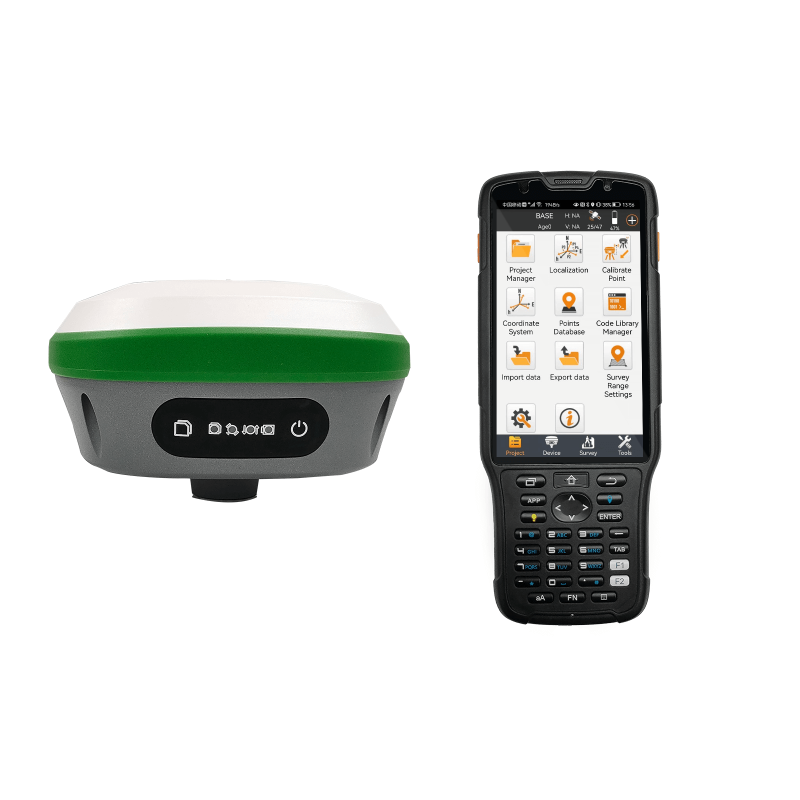What does a GPS signify for construction survey and layout?
To precisely identify and mark certain points, lines, and limits on a building site, a GPS (Global Positioning System) for construction survey and layout is used. This technology may precisely determine building corners, excavation bounds, foundation points, and infrastructure alignments by construction specialists like surveyors and engineers. GPS receivers determine their precise location on the surface of the Earth by combining signals from many satellites, which enables extremely precise measurements.
GPS technology is used in the construction industry to replace time-consuming and inaccurate human surveying techniques. Construction operations are guided by real-time location data provided by GPS-enabled equipment, such as rover units or machine control systems, ensuring that structures are positioned in line with architectural and engineering plans. This technology also makes Digital modelling and mapping possible, which helps with project management and decision-making. Ultimately, a GPS for construction survey and layout maximizes effectiveness, reduces mistakes, improves safety, and helps construction projects be completed.
The Ground-breaking Effects of GPS in Construction Survey and Layout:
The Global Positioning System (GPS) has greatly impacted the construction industry, as have many other sectors. Its effects on construction survey and layout have been genuinely revolutionary, providing important benefits in terms of accuracy, effectiveness, cost-effectiveness, and safety. Using GPS has revolutionized construction survey and planning in the following ways:
- Improved Accuracy:
Traditional survey methods frequently use hand measurements and tools, which might result in mistakes and disparities. Professionals in the construction industry can locate places with accuracy down to a few millimetres thanks to GPS technology, which gives very accurate positioning data. Thanks to this degree of precision, buildings are made in the proper locations and by the original designs.
- Faster Surveying:
It is faster surveying thanks to the removal of recurrent fieldwork and time-consuming hand measurements. Using GPS receivers, construction surveyors may swiftly gather data across wide regions, drastically cutting the time needed for surveying and layout activities. The speedier progress of projects is made possible by this expedited approach.
- Greater Efficiency:
Compared to conventional methods, GPS allows surveyors to cover bigger regions in less time. This effectiveness shortens project durations and enables construction teams to deploy resources more wisely and choose based on current information.
- Cost reductions:
The gps for construction survey and layout can result in various cost reductions. Lower project expenses are a result of fewer work hours and fewer mistakes. Additionally, the possibility of rework, which can be a significant expenditure in building projects, is decreased by properly defining our limits and places.
- Enhanced Safety:
Surveyors must occasionally operate in potentially hazardous locations because construction sites may be dangerous. With GPS, surveyors may gather information remotely from secure locations, reducing the hazards involved with on-site work.

- Complex Geometries:
GPS technology makes precise surveying and arrangement of complex geometries and asymmetrical forms possible. This is especially useful for projects with complex designs or unconventional layouts.
- Large-Scale Projects:
GPS technology is essential for large-scale infrastructure projects, including roads, bridges, and tunnels. It makes it possible to maintain alignment and grade standards over long stretches by allowing surveyors to travel great distances correctly and quickly.
- Environmental effect:
GPS helps to lessen the environmental effect of building projects by enabling more exact construction plans and lowering the probability of mistakes. This entails maximizing material use, minimizing excavation, and minimizing landscape impacts.
How does GPS for building surveys and layout work?
A network of satellites in Earth's orbit serves as the GPS (Global Location System) for construction survey and layout tasks, providing precise location data. A satellite constellation that continually sends signals to Earth makes up the GPS. These satellites have atomic clocks dispersed across several orbits to provide worldwide coverage. GPS receivers are employed on the building site. These receivers might come in portable devices, rovers carried by surveyors, or integrated systems on heavy machinery like bulldozers and graders. The GPS receiver gathers signals from all of the visible satellites. The receiver can determine its distance from each satellite by measuring the time it takes for signals to arrive.
As you can see, farmers who wish to use contemporary tractor guidance no longer need to own an older tractor. In the market for agricultural navigation systems, SMAJAYU has 12 years of expertise and various benefits over more well-known businesses like John Deere, Topcon, Trimble, and others. The enhanced RTK and manual guiding system guidance kits are only one of many characteristics that set SMAJAYU apart from its rivals. It is only one of many benefits that SMAJAYU provides. Farmers can use tractors with an RTK system and an auto-steer device to accomplish agricultural tasks with centimetre-level accuracy.
What differentiates the SMAJAYU tractor GPS from rival goods?
We applaud the farmers' efforts for significantly increasing our supply. The majority of the past twelve years have been devoted to developing the tractor with GPS, a piece of precision farming equipment that might assist all farmers in minimizing the amount of labour they must perform, raising the cash they earn from their property, and broadening their horizons. The Global Positioning System (GPS) is indispensable for applying precision agriculture techniques. A few examples of farming equipment that would only be as helpful to farmers with GPS are field sensors, tractor auto-steering systems, agricultural drones, and farm mapping software.
Conclusion:
The construction sector continually develops and uses new technology to increase productivity and accuracy. Using GPS for construction survey and layout procedures is one such innovation that has changed the industry. GPS (Global Positioning System) technology has completely changed how construction industry experts do their business. The major objectives of SMAJAYU intelligent agriculture are to maximize farmer productivity, lower input costs, increase farm revenue, and improve the farm environment. SMAJAYU is searching for dealership opportunities for auto-steering precision systems in agriculturally-oriented nations and areas to assist the rapidly expanding agricultural industry.


